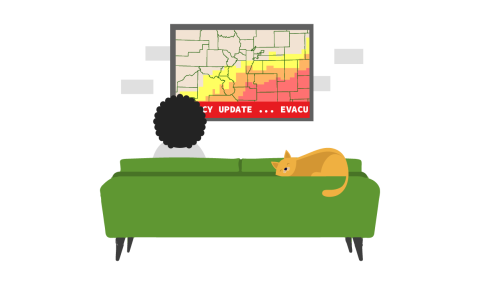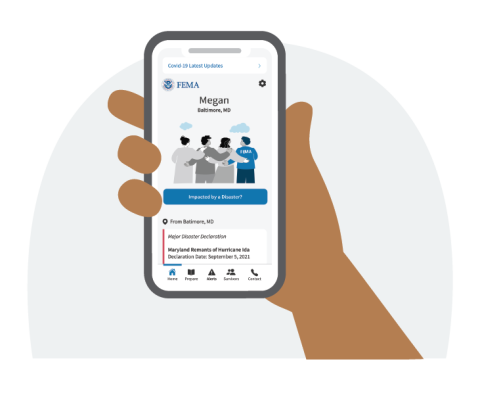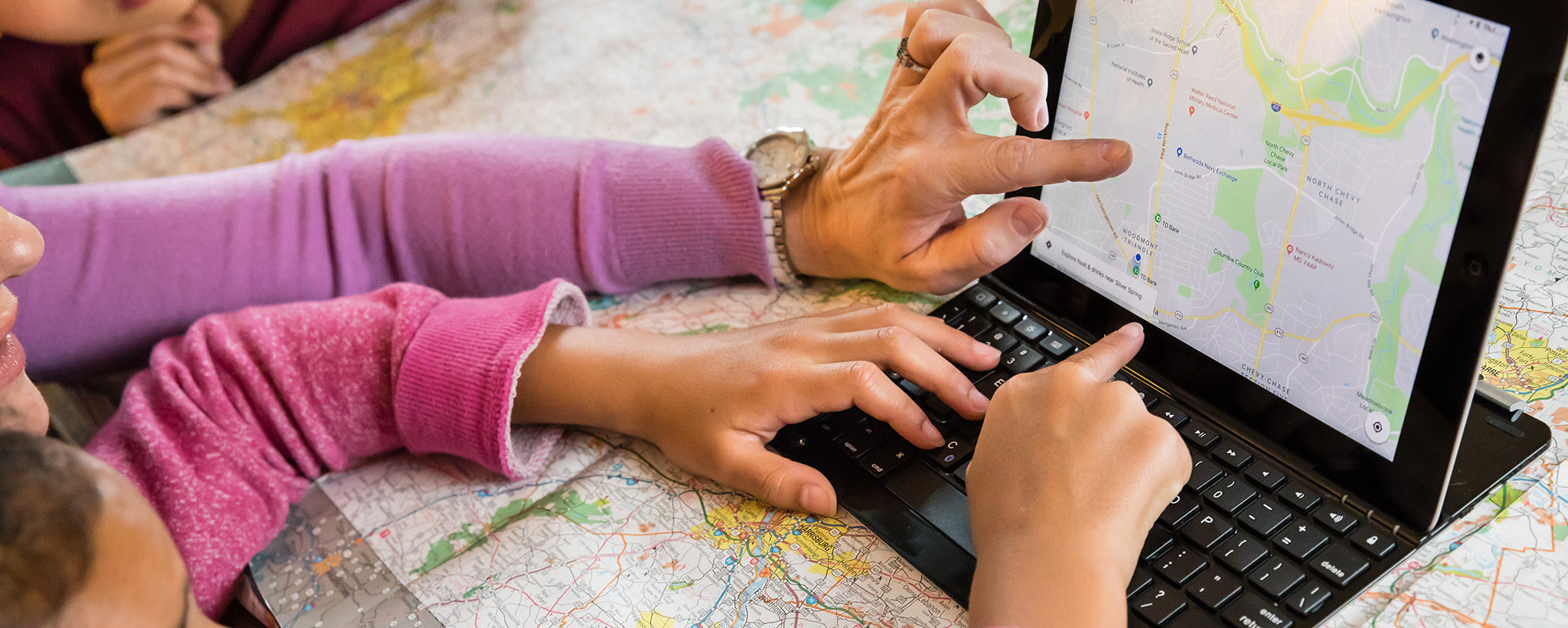Be in the Know
Before an Evacuation
During an Evacuation
After an Evacuation
Be in the Know
We have all heard that knowledge is power. In an emergency, it can be lifesaving. This is why we are encouraging everyone to “Be in the Know” to evacuate safely.

Know Your Risks
- It’s important to understand your location’s risks because no two communities face the same extreme weather conditions. You can find your local risks with FEMA’s National Risk Index.
Know When and Where to Go
- Whether it's the home of a friend or family member or a pre-designated shelter, know your evacuation destination.
- Having these plans in place can save valuable time and, most importantly, lives.
- Many states have designated evacuation zones and predetermined evacuation routes. Learn your state and local plans by visiting your state and county emergency management websites.
Know What to Bring
- Build a go-bag with all the essentials you might need, so you don’t need to scramble in an evacuation situation. Find a list of supplies at Build A Kit.
- Make sure everyone in your household knows where the bag is stored, and who is responsible for it in the event of an emergency.
Know Your Information Sources
- Identify where you can access reliable information so you can make informed decisions before, during, and after a disaster. Keeping up to date with the latest developments can save lives.
- Sign up for alerts from your local emergency management agencies and the National Weather Service, which will provide updates on threat conditions, shelter locations, and other important safety information.
- Download the FEMA App where you can receive real-time weather alerts, locate emergency shelters in your area, prepare for common hazards, and more.
Before an Evacuation

- Learn the types of disasters that are likely in your community and the local emergency, evacuation and shelter plans for each specific disaster.
- Plan how you will leave and where you will go if you are advised to evacuate.
- Check with local officials about what shelter spaces are available for this year.
- Identify several places you could go in an emergency such as a friend’s home in another town or a motel. Choose destinations in different directions so that you have options during an emergency.
- If needed, identify a place to stay that will accept pets. Most public shelters allow only service animals.
- Be familiar with alternate routes and other means of transportation out of your area.
- Always follow the instructions of local officials and remember that your evacuation route may be on foot depending on the type of disaster.
- Visit FEMA’s National Risk Index, an interactive tool anyone can use to improve their understanding of natural hazard risk where they live so they can take action to protect themselves.
- Come up with a family/household plan to stay in touch in case you become separated; have a meeting place and update it depending on the circumstance.
- Assemble supplies that are ready for evacuation. Prepare a “go-bag” you can carry when you evacuate on foot or public transportation and supplies for traveling longer distances if you have a car.
- If you have a car:
- Keep a full tank of gas if an evacuation seems likely. Keep a half tank of gas in it at all times in case of an unexpected need to evacuate. Gas stations may be closed during emergencies and unable to pump gas during power outages. Plan to take one car per family to reduce congestion and delay.
- Make sure you have a portable emergency kit in the car.
- If you do not have a car, plan how you will leave if needed. Decide with family, friends or your local emergency management office to see what resources may be available.
During an Evacuation

- Download the FEMA app for a list of open shelters during an active disaster in your local area.
- Listen to a battery-powered radio and follow local evacuation instructions.
- Take your emergency supply kit.
- Leave early enough to avoid being trapped by severe weather.
- Take your pets with you but understand that only service animals may be allowed in public shelters. Plan how you will care for your pets in an emergency now.
- If time allows: Call or email the out-of-state contact in your family communications plan. Tell them where you are going.
- Secure your home by closing and locking doors and windows.
- Unplug electrical equipment such as radios, televisions and small appliances. Leave freezers and refrigerators plugged in unless there is a risk of flooding. If there is damage to your home and you are instructed to do so, shut off water, gas and electricity before leaving.
- Leave a note telling others when you left and where you are going.
- Wear sturdy shoes and clothing that provides some protection such as long pants, long-sleeved shirts and a hat.
- Check with neighbors who may need a ride.
- Follow recommended evacuation routes. Do not take shortcuts, they may be blocked.
- Be alert for road hazards such as washed-out roads or bridges and downed power lines. Do not drive into flooded areas.
After an Evacuation

If you evacuated for the storm, check with local officials both where you’re staying and back home before you travel.
- If you are returning to disaster-affected areas, after significant events prepare for disruptions to daily activities and remember that returning home before storm debris is cleared is dangerous.
- Let friends and family know before you leave and when you arrive.
- Charge devices and consider getting back-up batteries in case power-outages continue.
- Fill up your gas tank and consider downloading a fuel app to check for outages along your route.
- Bring supplies such as water and non-perishable food for the car ride.
- Avoid downed power or utility lines, they may be live with deadly voltage. Stay away and report them immediately to your power or utility company.
- Only use generators outside and away from your home and NEVER run a generator inside a home or garage or connect it to your home's electrical system.


